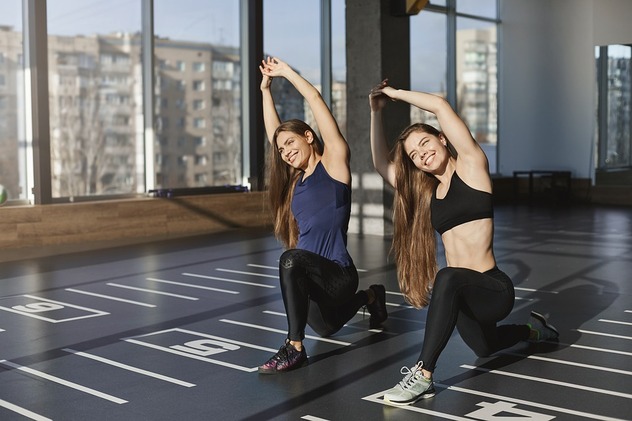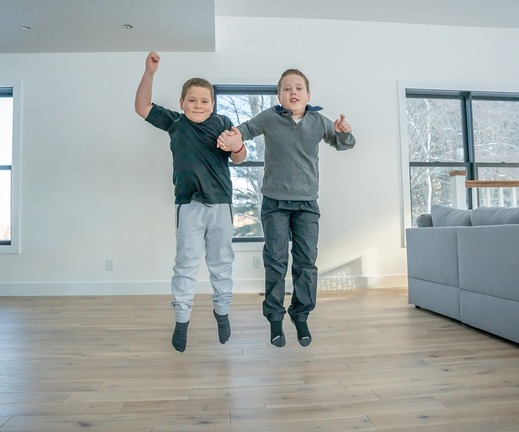The COVID-19 pandemic has caused many of us to spend more time at home and seated than usual. Many of us find it challenging to exercise the way we usually do. For those who don’t regularly engage in vigorous physical activity, it is even more difficult.
But in a time like this, it’s critical for people of all ages and abilities to be as active as they can. The Be Active campaign from WHO aims to assist you in doing just that while also providing some entertainment.
Remember: Even a brief break from sitting for 3–4 minutes of light exercise, like stretching or walking, can help relax your muscles and improve blood flow and muscle activity.
Both the body and the mind benefit from regular exercise. It can lower high blood pressure, assist with weight management, and lower the risk of heart disease, stroke, type 2 diabetes, and various cancers—all diseases that can make people more vulnerable to COVID-19.
Additionally, it enhances balance, flexibility, and fitness while enhancing bone and muscle strength. Balance-boosting exercises can reduce the risk of falls and injuries in older people.
Regular physical activity can help us establish a routine for our days and serve as a means of maintaining relationships with our loved ones. It’s also good for our mental health – reducing the risk of depression, and cognitive decline and delaying the onset of dementia – and improving overall feelings
Covid-19 Recovery Problems For Exercise
How well you can exercise could be impacted by COVID-19 health issues.
These include:
- breathlessness
- phlegm – this can depend on how you were affected by the virus
- extreme tiredness (fatigue) and a lack of energy
- muscle weakness and joint stiffness
Read more about recovering from COVID-19
Start Slow
The next few weeks should be spent gradually increasing your activity level. Although it will take some time for you to return to your regular activities, regular exercise is good for you.
You should:
- start slowly and introduce new activities gradually
- set yourself realistic targets each week
- rest when you feel tired
Read advice on conserving your energy and fatigue after COVID-19
If You Feel Breathless
It’s critical to keep an eye on your breathlessness when working out. You should exercise to the point where you feel a little out of breath but can still speak.
Check how breathless you are on a breathlessness scale
Walking
One of the simplest but most effective ways to start getting back into shape and strength is to go for a walk.
Initially, set manageable, brief goals. Your objective might be to walk to the bathroom if you are extremely frail. As soon as you feel ready, extend the distance.
How much walking you should do each day
Only use this as a guide. If you are able, try to work toward these objectives each day.
Make an effort to schedule your walk so that you can stop if you get tired or out of breath. A wall or a bench could be this.
- Week 1: 5 to 10 minutes
- Week 2: 10 to 15 minutes
- Week 3: 15 to 20 minutes
- Week 4: 20 to 25 minutes
- Week 5: 25 to 30 minutes
You should try to walk for at least 30 minutes five days a week after six weeks. You should move reasonably quickly during this walking so that you feel a little out of breath. You should still be able to walk and speak.
Getting Around At Home
You might find it challenging to climb the stairs in your home. Try to live downstairs if you can until your energy levels rise.
If you require equipment to help you move around at home, an occupational therapist might be able to assist.
To obtain a referral, speak with your general practitioner.
Exercises If You Can’t Leave Your Home
You might be ill or confined to your home. Even so, you should continue to incorporate daily exercise.
It’s important to stay active and avoid spending too much time in bed. It can speed up your recovery, both physically and mentally.
The exercises listed below can be performed in a chair, at home, or in a medical facility.

Seated March
- Sit tall
- Lift your knee
- Return to the floor
- Repeat 20 times on each leg
Seated Leg Lift
- Sit tall
- Lift your foot to straighten your leg
- Hold for 3 seconds
- Return to the floor
- Repeat 10 times on each leg
Sit To Stand
- Place hands on armrests
- Push to standing
- Return to the seat with control
- Repeat 10 times
Rowing Arms
- Sit tall
- Hold arms at shoulders
- Push arms out in front
Toe Lifts
- Sit tall
- Keep heels on the floor
- Return to start
- Repeat 20 times
Side Legs
- Stand tall holding the bar
- Lift your leg to the side
- Keep your leg straight
- Repeat 15 times on each leg
The following advanced exercises are only appropriate for you if your physiotherapist says so.
Leg Back
- Stand tall holding the bar
- Lift your leg backwards
- Keep your leg straight
- Repeat 15 times on each leg
Knee Raise
- Stand tall holding the bar
- Lift your knee as high as you can
- Repeat 15 times on each leg
Heel Raises
- Stand tall holding the bar
- Lift your heels
- Come up on your toes
- Repeat 20 times
Knee To Elbow
In a back-and-forth motion, touch one knee with the opposing elbow. Try to do this for 1 to 2 minutes at your own pace, then rest for 30 to 60 seconds before repeating up to 5 times. Your heart rate and respiration rate should rise after this exercise.
Plank
With your elbows tucked under your shoulders, support your forearms firmly on the ground. Keep your hips level with your head. Hold for 20–30 seconds, rest for 30–60 seconds, and then repeat up to 5 times. If possible, hold for longer. Your arms, legs, and stomach become stronger after doing this exercise.
Back Extensions
Lift your upper body while keeping your legs on the floor, touching your ears with your fingertips. Reducing the upper body once more Then, take a 30- to 60-second break before repeating the exercise up to five times. Your back muscles get stronger from doing this exercise.
Squats
Your toes should be pointing outward as you stand with your feet hip-distance apart. Maintaining the heels on the ground and bending the knees so that they are over (rather than in front of) the feet while doing so will help you stay balanced. Flex your legs by bending them. Exercise 10–15 times (or more), then pause for 30–60 seconds before repeating up to 5 times. Your legs and glutes will get stronger from this exercise.
Side Knee Lifts
As you lift your knee to the side and switch sides, touch your knee with your elbow. Try to do this for one to two minutes, rest for 30 to 60 seconds, and then repeat up to five times, finding your own pace. Your heart rate and respiration rate should rise after this exercise.
Superman
Knees should be under hips, and hands should be under shoulders. Lift the opposite leg back while bringing the opposite arm forward, switching sides. Perform this exercise 20–30 times (or more), take a 30- to 60-second break, and repeat up to five times. Your back, glutes, and belly muscles get stronger with this exercise.
Bridge
Your knees should be over your heels as you firmly plant your feet on the ground. Lift the hips as high as it feels comfortable, then slowly lower them back down. Perform this exercise ten to fifteen times (or more), then pause for 30 to 60 seconds before repeating up to five times. Your glutes become stronger with this exercise.
Chair Dip
Your feet should be about 0.5 meters from the chair as you hold onto the seat. Once your hips are on the ground, straighten your arms after bending them. Perform this exercise 10–15 times (or more), then rest for 30–60 seconds before repeating up to 5 times. You build up your triceps with this exercise.
Chest Opener
Put your fingers together behind your back. You should extend your arms and let your chest expand. Hold this position for 20–30 seconds or longer. Your chest and shoulders will be stretched in this position.
Child’s Pose
Bring your hips to your heels while kneeling on the floor. Your arms should be actively extended forward while your belly is supported by your thighs. Hold this position for 20–30 seconds (or longer) while breathing normally. Your sides, shoulders, and back will all be stretched in this position.
Seated Meditation
Crossing your legs comfortably, take a seat on the floor (or a chair, if you prefer). Maintain a straight back. Swallow deeply as you gradually close your eyes, unwind, and relax. Try to keep your attention on your breath and block out any thoughts or worries. To unwind and clear your mind, stay in this position for at least five to ten minutes.
Legs Up The Wall
Bring your hips (5–10 cm) up against the wall and put your legs up for support. Close your eyes, unwind, and gradually breathe in deeper breaths. Try to keep your attention on your breathing and avoid thinking or worrying. Take up to 5 minutes to relax in this position. This position is designed to be cozy, soothing, and stress-relieving.
Where To Get Help
8 to 12 weeks after your recovery, if you’re still having trouble exercising, speak with your doctor. Your physiotherapist might be recommended by them.
Continue being active after your recovery. For activities that might interest you, check with your neighborhood sports club or gym. For instance, a neighborhood walking club.
The physiotherapy department at Clontarf Hospital kindly provided the exercises and photos.
